Kicking off the 30th edition of Artissima: from Nov. 2-5, Turin ’s contemporary art fair will draw thousands of visitors to the city. This year’s theme is Relations of Care, a concept developed in a recent essay by Brazilian anthropologist Renzo Taddei, Professor of Anthropolology at the Universidade Federal de São Paulo in Brazil, dedicated to formulating a hypothesis for overcoming the crises of our time by taking inspiration from indigenous Amazonian thought. Four sections of the fair(Main Section, New Entries, Monologue/Dialogue and Art Spaces & Editions), three curated sections(Drawings, Present Future and Back to the Future), 181 galleries, hundreds of works.
The ultimate goal of any art fair of course is to sell, bringing gallerists and collectors together. Artissima is one of the few fairs that have an online catalog where you can see the prices of the works, although not all of them (indeed, for most of the works the price is “on demand”). We have gone around the galleries selecting some interesting works, many of which have price-on-demand, and we therefore offer a selection for each price range, putting together pieces from galleries that have allowed us to publish requests (there are in fact artists and galleries that do not like their works’ prices being published). So here is our selection of fifteen works, each with its price (or price range).

Born in Paris in 1989, Camille Benarab-Lopez is one of the most...inexpensive artists at the fair. A sculptor, she creates works that blend figurativism and abstraction, shaping pieces that spring directly from her imagination. “Camille Benarab-Lopez,” wrote critic Margaux Bonopera, “does not produce images but uses those of others more out of fascination than ease. She thus accumulates various documents whose diverse sources give an ambiguous status to her works. Whether sculptures or paintings, his works attempt to create functional and coherent entities that, like memory, function through fragments, reinterpretation and rewriting.” Signes is a new series of small works that the artist is presenting for the first time at Artissima.
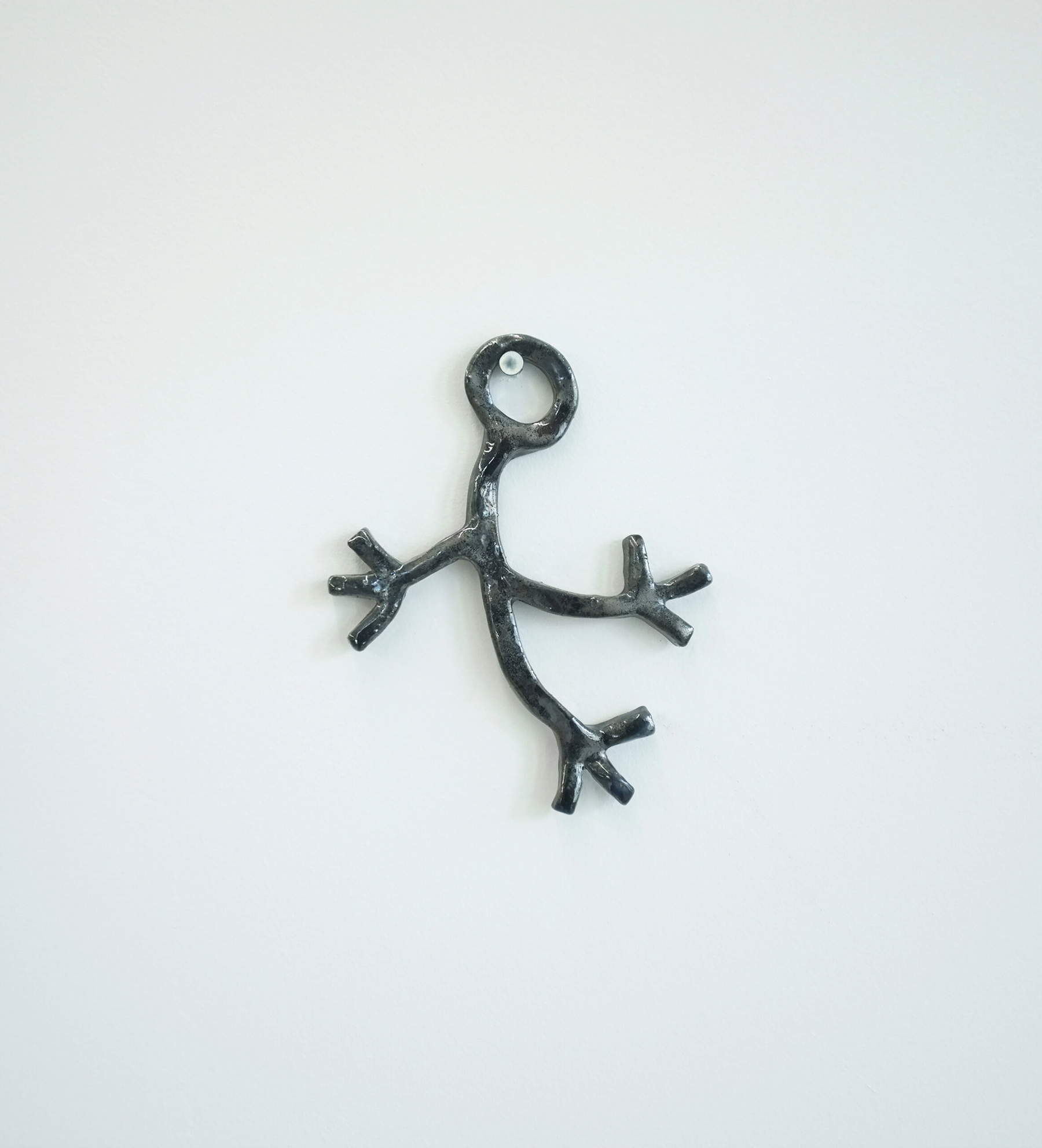
Shamilla Aasha, born in Zimbabwe in 1977, explores her multicultural background as a Shona and Indian woman living in the Matabeleland region of Zimbabwe by developing works that address issues related to the fusion of traditional cultures and practices and how they affect identity, spirituality, and social status for herself and other women in her community. Aasha’s works incorporate weaving, tapestry and interacting with the idea and history of painting. They emerge as soft sculptures, tapestries made from found objects and abstract embroideries. She describes them as sacred objects, an apt metaphor for her narratives. This metaphor is further expanded as the artist uses paper patterns, textiles and stitching. In addition to her art practice, Shamilla also continues to nurture creativity through her Asha Children’s Trust, an organization dedicated to creating safe spaces for creative youth to grow and thrive outside the formal education sector.
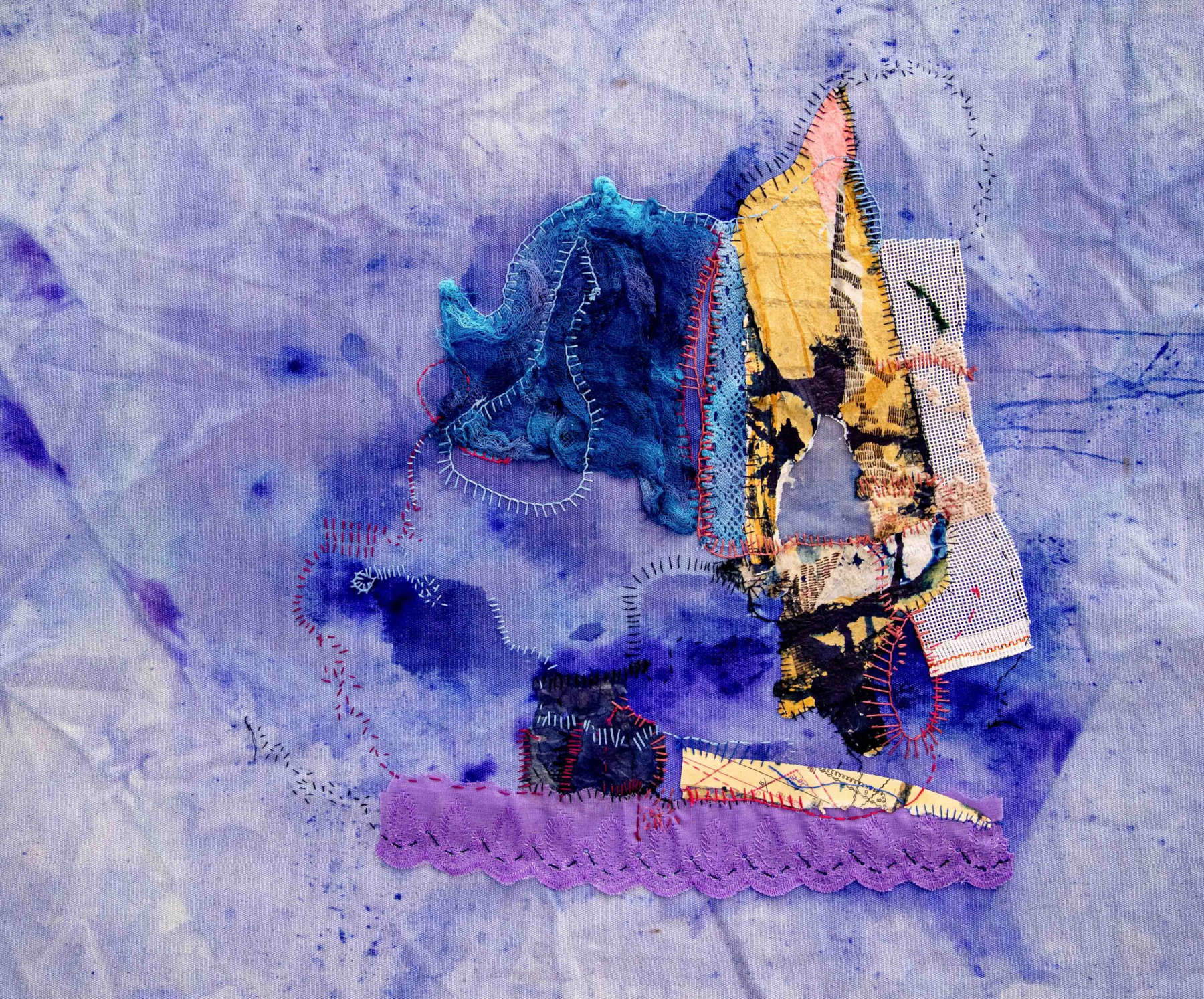
Work title borrowed from Giacomo Balla for sculpture by 1992-born Modenese artist Giulia Poppi. She is presented by Fuocherello, a gallery debuting at Artissima in the New Entries section presenting new works by Andrea di Lorenzo and, indeed, Giulia Poppi. Giulia Poppi’s works intend to act on the perception of the surrounding space by working with sculptural forms that often extend beyond the physical limits of the object itself. At Artissima, Poppi presents a series of sculptures, WEICHWEISSWEICH, made in Carrara, and formed amidst the violent pressures of water and quintals of marble in their cycle of use in the quarry, where the artist retrieves them. In contrast to their violent nature and witness to profound landscape modifications and scars while being made of iron they appear light, soft and familiar forms. Their chromatics in addition to being an explicit reference to the automotive industry, so relevant in the context of Turin city and the industrial reality cradle of the gallery, want to confuse the whole process by stealing the livery ... to beetles.
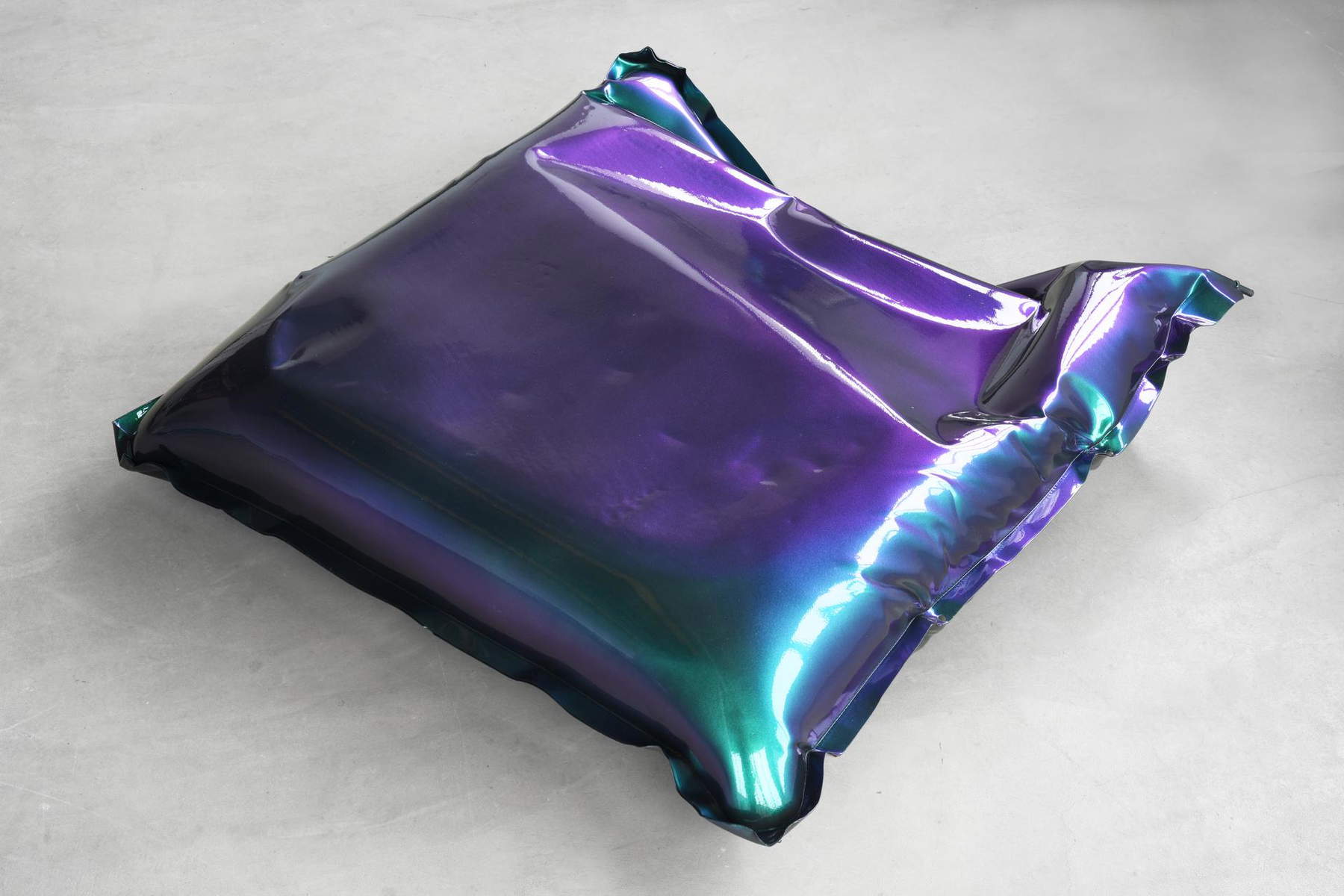
Coady is an artist living and working in Melbourne, Australia who explores socio-psychological issues, questioning our self-perception and the precariousness of our modern mental structure. Central to Coady’s practice is the exploration of mood and the oscillations between manic and concentrated mental states. His work challenges issues such as our dependence on drugs and the complexity of understanding ourselves in real time. Technically complex and detailed, Coady’s “pill sculptures” reflect a controlled and calm state of mind and speak to us about the boundary between control and loss of control, reality and fiction, reality and illusion, well-being and ill health. Works of great technical accuracy, they aim to immediately point out what might have been ignored before, since despite the common presence of pills in our lives to quickly arrest all kinds of aches and pains, the subtle elegance of their design may have inadvertently escaped us until all the features have been magnified and subjected to a degree of parody.

Drawing has always been a fundamental part of Andrea Sala’s artistic practice, understood as the main tool for exploring the forms that make up reality but also the possibilities of abstraction and understanding of those elements unsuitable by their very nature for sculpture. National Park Blanket is the latest series of drawings made by Sala: the artist starts from the study of blankets that belong to the history of peoples of different origins. “I was intrigued,” says the artist, "by the social role that is still referable to the blankets and I began to imagine them as a display capable of catalyzing actions, thoughts and objects that belong to everyday life and that becomes landscape understood as a dynamic system that has acted in time and acts in the present and brings back all its traces.
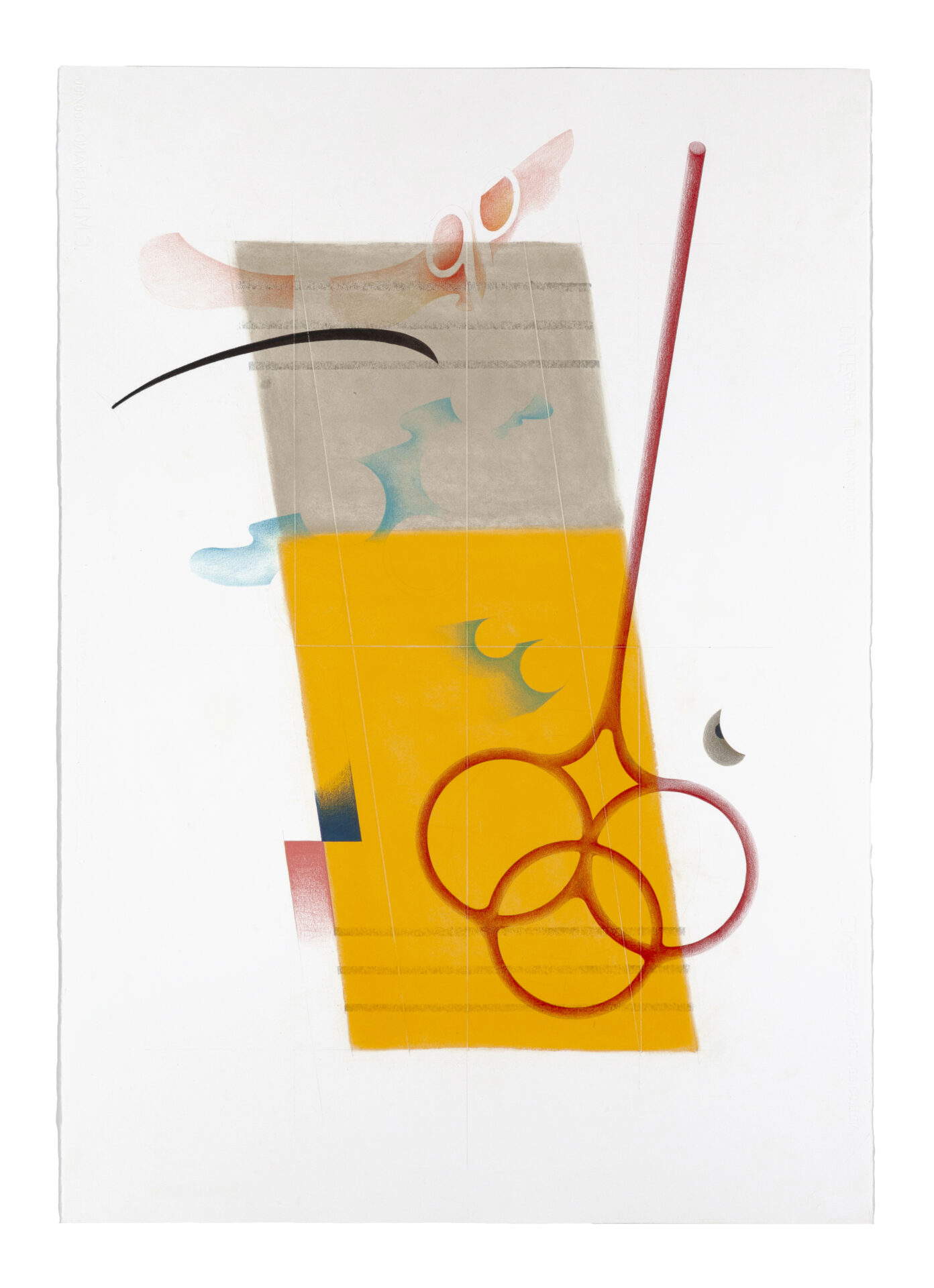
Born in 1999, Swiss Marius Steiger is one of the most interesting young artists presented at Artissima. He is currently studying Painting at the Royal College of Art. His work explores issues of identity, authenticity, artificiality, consumerism, consumption, and the relationship of humans to modern technology. He creates works that combine real narratives with fiction in an austere yet romantic visual language, ironically questioning the pursuit of perfection. The overall aesthetic of his particular still lifes...deconstructed, reminiscent in some ways of the works of American Wayne Thiebaud, conveys the digital world by referencing the screen through the illumination of motifs and the physicality of the surface. Prices vary widely: the large two-meter still life we show here is the most challenging work, while the smaller formats (30 x 25) take home at 1,800 euros.
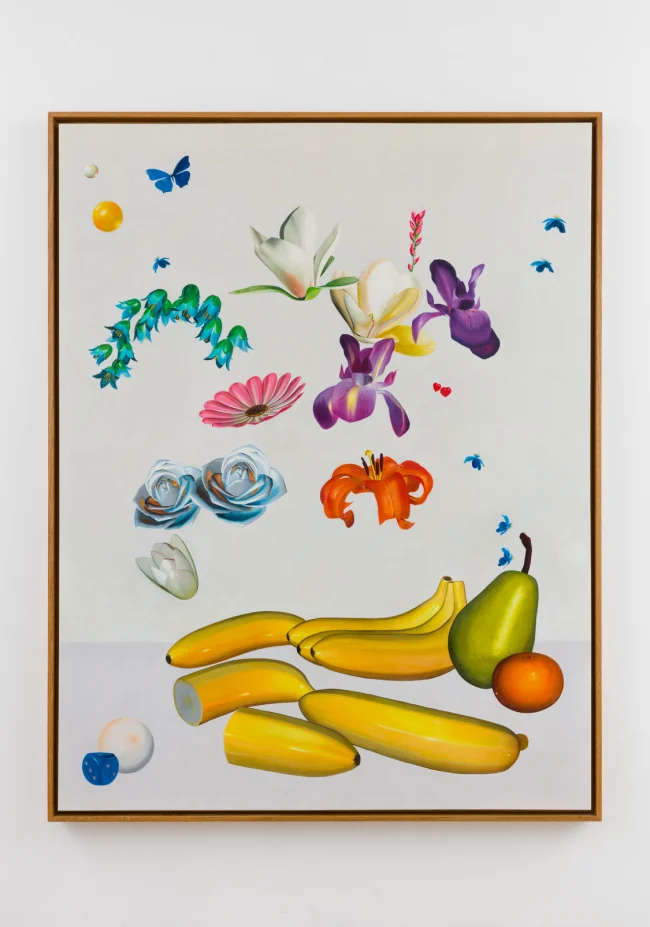
Born in Florence in 1935, Forti is among the great protagonists of contemporary performance in the last fifty years. An artist, choreographer, dancer, and writer, Forti has dedicated herself to the search for kinaesthetic awareness, always engaging in experimentation and improvisation. Investigating the relationship between object and body, through animal studies, “news animation” apunto and landscape portraits, she has reconfigured the concept of performance and dance. Raffaella Cortese brings several of Simone Forti’s “news animations,” representing his view of news and socio-political-world issues more generally, which become a pretext for exploring language and its intersections with dance, images and music.
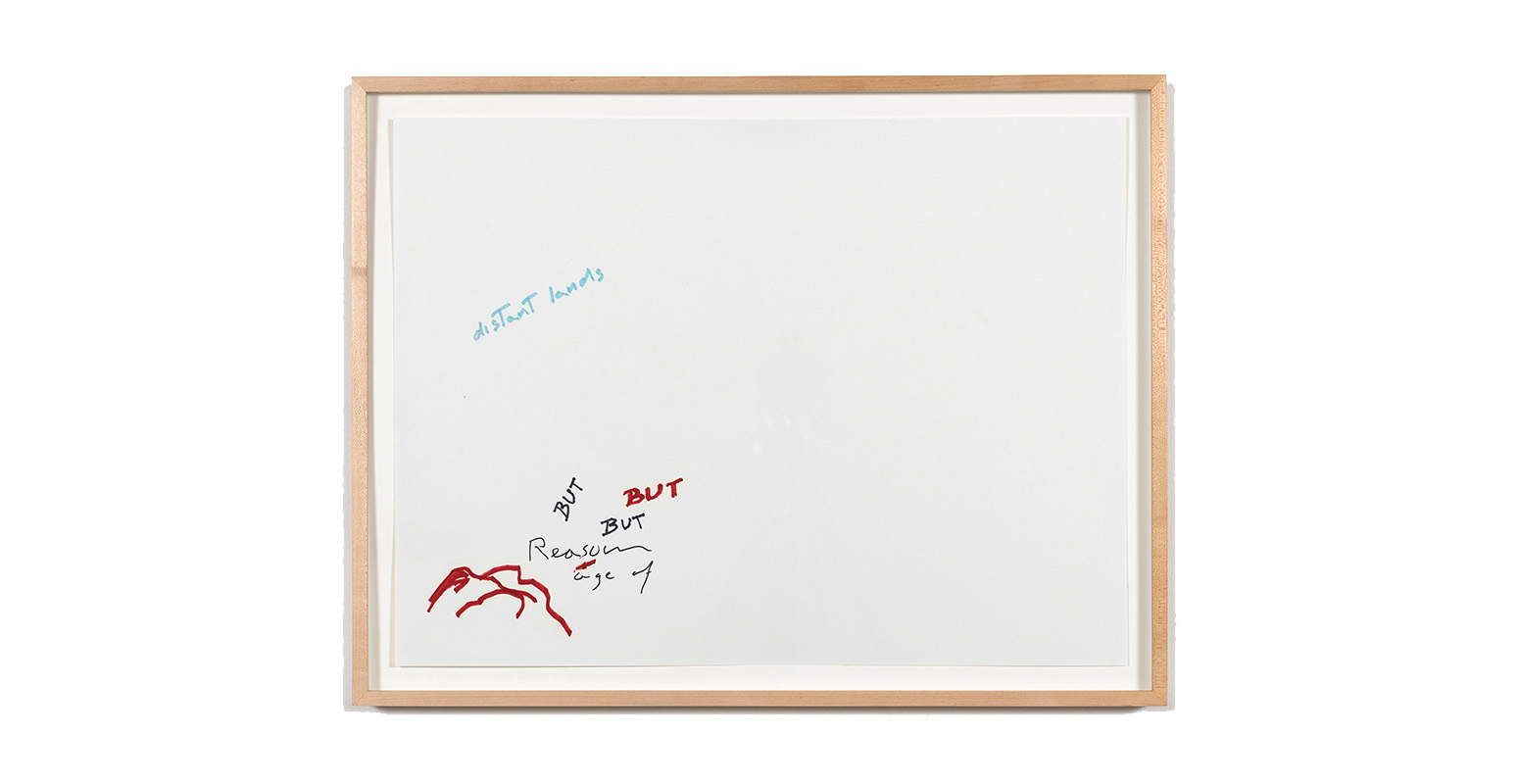
Yesterday Ikebana by Alessandro Piangiamore is a series, begun in 2018, of sculptures made by pouring concrete over an arrangement of fresh flowers discarded in city markets and on the streets. The end result, always unpredictable, is meant to emphasize the contrast between the elusive fragility of flowers and the hardness of concrete, crystallizing the ephemeral into a kind of etched still life. The sculptural nature of the work is then reinterpreted through a pictorial representation, as the “Yesterday Ikebana” are hung vertically on a wall.

Thomas Brambilla presents at Artissima new works by Marco Cingolani, an absolute protagonist of Italian painting from the 1990s to the present. Cingolani, for these new works, starts with a quote from Ovid’s Metamorphoses to describe the Golden Age: “The Golden Age was the first, then there was neither pain nor sadness [...] The very first men, created by the gods, lived in the time of Krónos. It was the golden age, and the world was lulled by an eternal spring. The earth spontaneously produced its fruits, without any need to be touched by the rake, or torn by the plowshares. Zephyrs caressed the flowers born without seed, the crops and fields were always yellow with ears of corn, and rivers of milk and nectar flowed over the earth.” The Golden Age is described as a time when suffering and labor did not exist, where food was never lacking and where everyone could live in harmony with nature, and it ended only when Zeus dethroned Kronos, thus causing a slow decline of Humanity. Ovid’s work took up this subject in order to promote the reign of Emperor Augustus and to spread the idea of a return to ancient splendor after the period of terrible civil wars at the end of the Republic. Many artists over the centuries, following Ovid’s example, would take up this theme in an allegorical and symbolic sense and, especially in painting, it would be reinterpreted in different ways and adapted according to spiritual and social conceptions. Marco Cingolani, in this new series of paintings formed by castings of golden pigment and traces of color, wanted to do just that: using Ovid’s narrative, he took up and reinterpreted the Golden Age and now presents us with a new beginning. In fact, Cingolani has distanced himself from the initial figurativism that made him so famous in the 1980s and 1990s, although nevertheless the same mastery of color and the presence of the barely noticeable silhouettes that have always appeared in his works remain clearly recognizable.

The installation by Itamar Gov, an Israeli artist born in 1989, echoes the words of Byzantine historian Niketa Choniates, who railed against the Crusaders’ devastation of Constantinople at the Fourth Crusade in 1204: “O Imperial City, fortified City, City of the great king, tabernacle of the Most High, praise and song of his servants and beloved refuge for foreigners, queen of the queens of cities, song of songs and splendor of splendors, and of the rarest vision of the rare wonders of the world, who is it that has torn us from you like dear children from their adoring mother? What will become of us?” The installation mounts Choniates’ words on scaffolding, reminiscent of the signs on the roofs of old hotels. The sign, however, is meant to retain an underlying ambiguity: its arrangement-detached from any pragmatic function and placed in a closed room instead of gleaming on a high roof-attests to a certain failure, a commitment that cannot be fully realized, pointing to the gulf between the promise of a refuge for all foreigners and the concrete reality that awaits those foreigners, far from what used to be their home. Addressing the intricate relationships between history, ideology and aesthetics, Itamar Gov’s practice focuses on sculptural and spatial installations alongside graphic and video works and communicates with various forms of personal, collective and institutional memory. Working with a diverse set of visual and theoretical tools, the starting point of his projects is an inquiring skepticism toward cultural traditions, conventions and gestures that are considered self-evident. Gov’s works are based on ongoing research and revolve around the intersection of art and politics, highlighting the tension between the known and the assumed and challenging a sharp boundary between fact and falsehood, memory and imagination.

In this selection of works from Artissima, we could not miss the artist who will represent Italy at the next Venice Biennale: Massimo Bartolini. He is one of the rare “big names” whose prices are published in the Artissima catalog: credit to Magazzino, which is among the few galleries (as well as among the very rare ones that propose established artists) to bet on this strategy. There are several works offered by Magazzino: one of the most recent is Rugiada, a work from 2022 made with enamel on aluminum, but belonging to a series that Bartolini has been pursuing for a number of years and that he also recently exhibited at the large solo show Hagoromo held last year at the Centro Pecci in Prato. Dew is a series of paintings in which a sheet of aluminum is covered with an iridescent, iridescent color and then with an artificial emulsion that simulates dew. “Although they may seem like abstract forms, these sort of monochromes hark back to one of the underlying themes of Bartolini’s work: the natural landscape,” curator Luca Cerizza explained in Hagoromo’s texts. “As the title suggests, the ’dews’ can in fact be read as windows on which dew has been deposited and from which a changing landscape can be seen, just as the color of the paintings changes with the viewer’s movement. These works enact a tension between the two-dimensionality of painting and the three-dimensionality of sculpture, between the background (the landscape) and the foreground (the dew), between movement and stasis.”
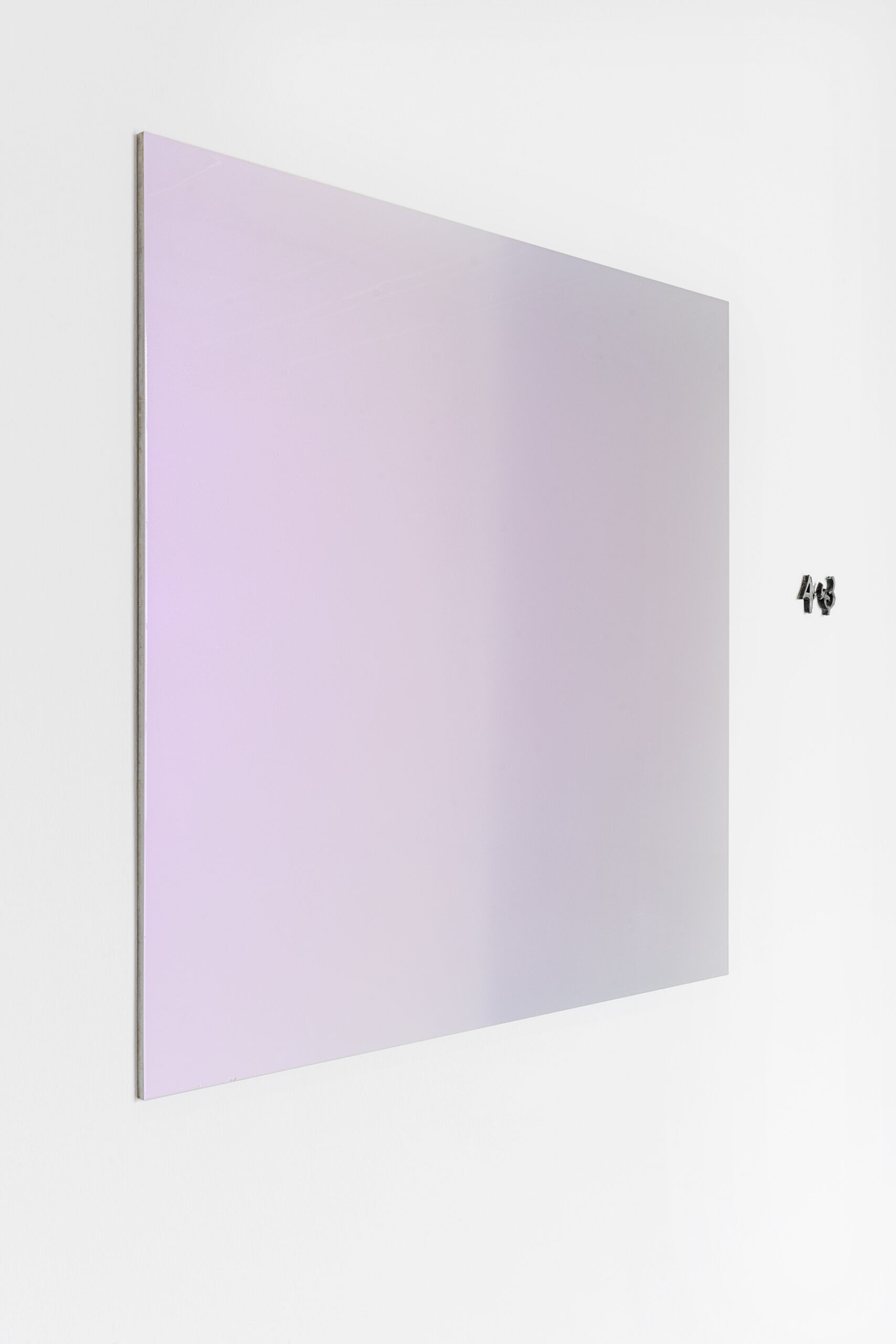
Among the most emblazoned names in contemporary Italian art, Marinella Senatore is present at Mazzoleni with installations and some polyptychs such as this Make it shine. Interconnections between space dedicated to encounter, such as that of squares, and the transformative power of social engagement are some of the keys to the work of Marinella Senatore, who bases her creative practice on the aesthetics of resistance. Her light and neon works focus on community and the transformative power of art and participation. They are works meant to celebrate individuals and communities through phrases of empowerment and the power of light, as in the case of her ceiling lights. The attempt to capture the energy of light is also embodied in the collages: musical scores, photographs, sketches and moving silhouettes are extrapolated from moments of the School of Narrative Dance, his best-known participatory project created in 2012, which for more than a decade has involved 8 million people in 23 countries.

Lia Rumma brings, as always, one of its leading artists, Gilberto Zorio, a major exponent of Arte Povera. Gilberto Zorio creates artworks that capture chemical processes, mechanical transformations and energy exchanges alluding to evolution and human existence. Zorio uses a specific, highly recognizable visual vocabulary, one that makes use of five-sided stars, which in his art become symbols of movement, energy and transformation. Consistent with the principles of Arte Povera, he uses traditionally non-art materials in his work, such as scaffolding metal, foam and cowhides. Memory in Parchment, in which the now classic steel star is fixed on an irregular parchment background, is one of the most recent works by the indefatigable Piedmontese master born in 1944.
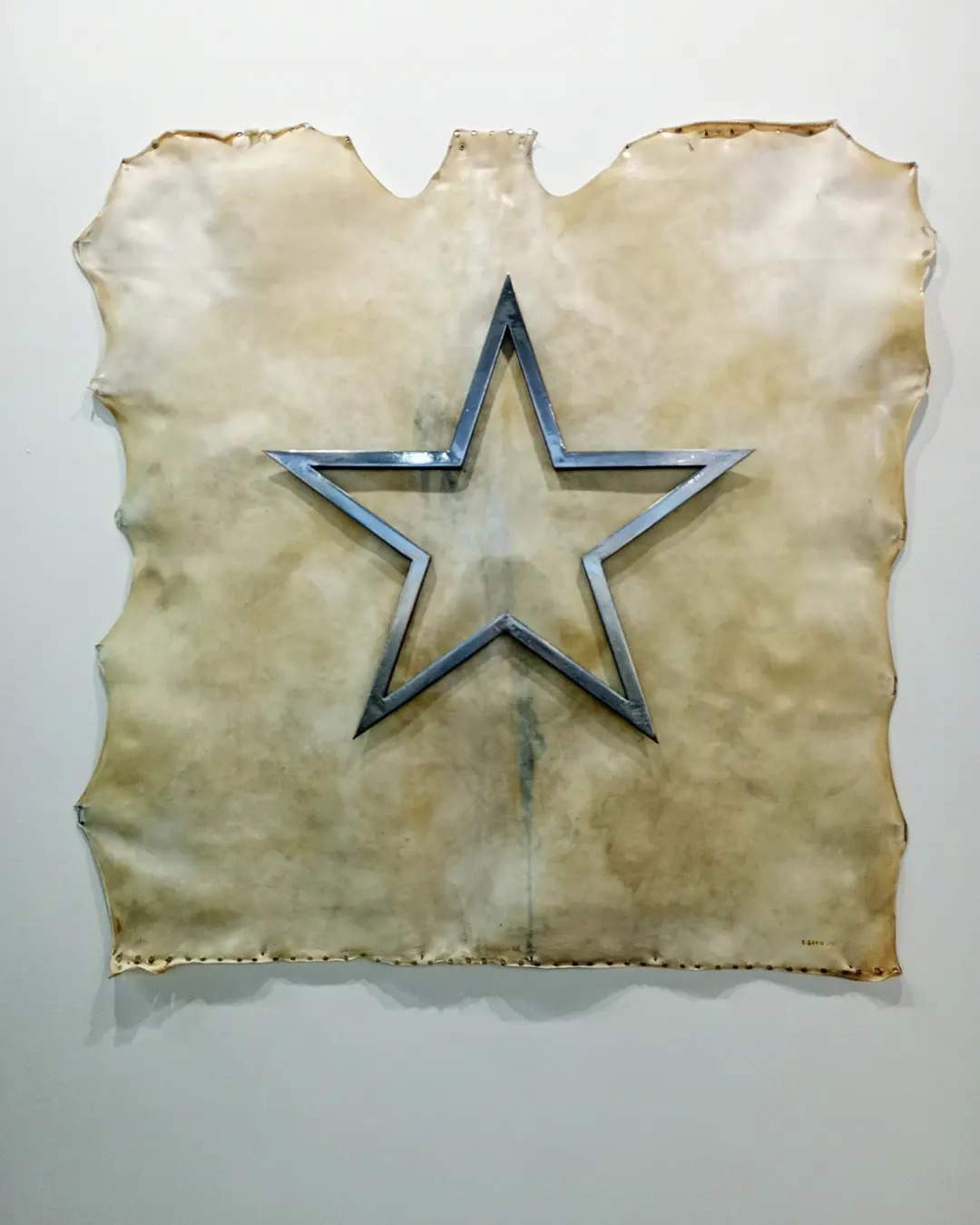
Also on view at Artissima this year is one of Leandro Erlich’s now-famous Clouds, present at the fair after the success of the Milan exhibition. The Cloud series “has changed over time, changing and transforming as clouds do,” Erlich says. “At the time I was working on a project for a building in Japan and needed to create screens that would stop the wind. My initial attempts led to the first Cloud, a composite of multiple sheets of glass that, when viewed from the right angle, appear as a three-dimensional image. Although I sometimes plan a piece from the beginning and know where I am headed as I work, this series was an ongoing experience in which the cloud emerged. I don’t think one approach is superior to another, the intuitive process of making versus the complete plan, but there is something about this more nebulous and fortuitous experience that I appreciate as an artist. Like an idea, the Cloud is at once totally real and illusory. Atmospheric clouds have always been a screen for human projection, but at the same time they are nothing more than a momentary event, what writer Jon Mooallem calls a ’conspiracy of vapor.’ Yet we keep looking to the sky for signs, signals. We see what we imagine and feel connected to our interpretation, like the Rorschach Test or other people’s intentions or so many other things we appropriate with our minds.”
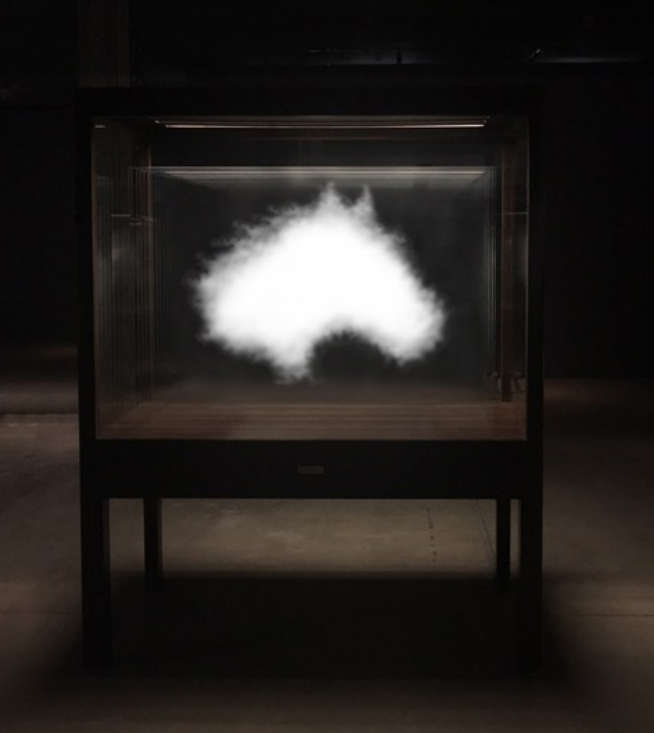
We close with a name that needs no introduction. Tornabuoni Arte brings great twentieth-century art to Artissima, and there are also three splendid pieces by Lucio Fontana, all hanging together on the same wall: three Spatial Concepts, belonging to the series of Cuts (the Waits) and Holes. The prices are obviously among the highest at the fair.
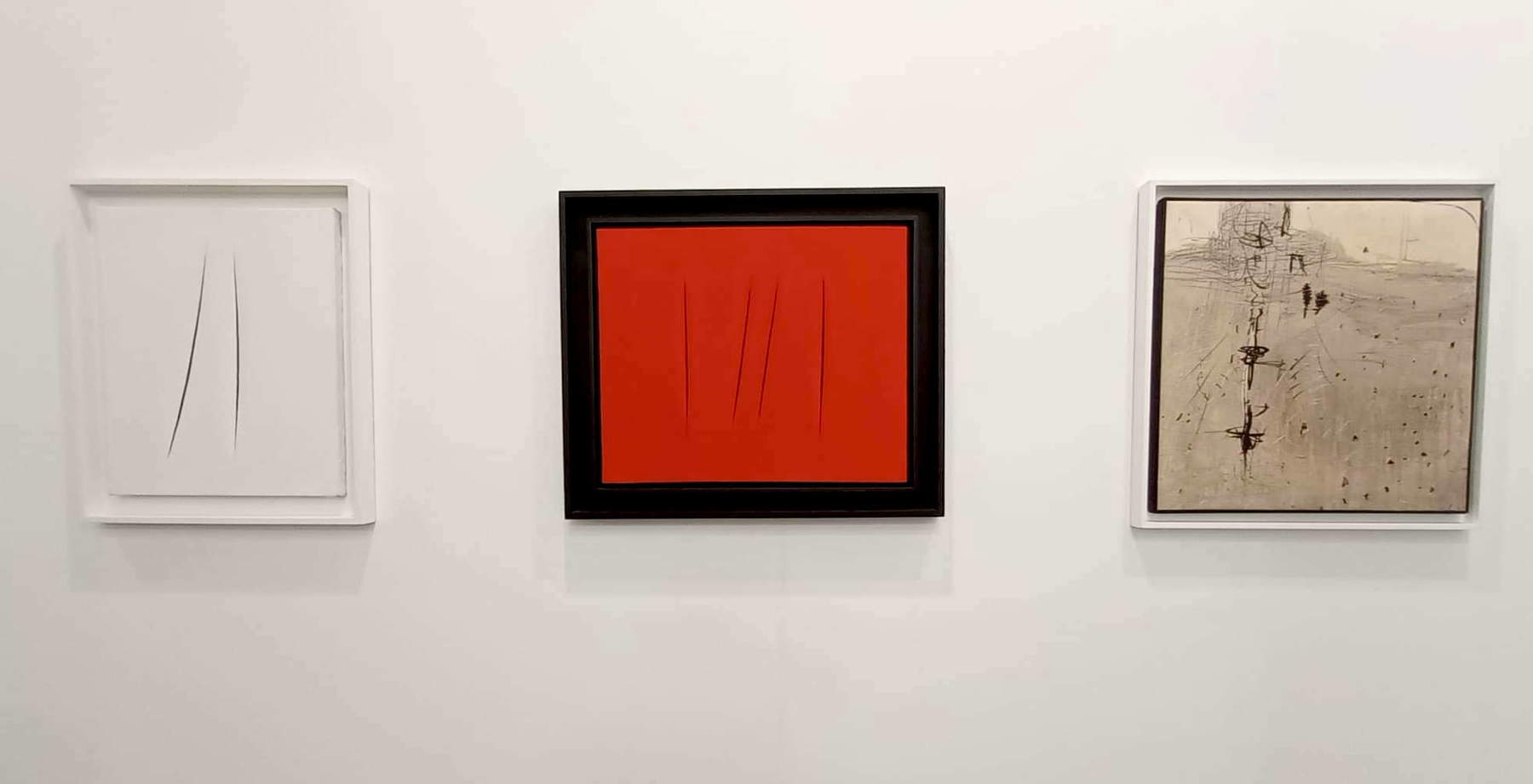
Warning: the translation into English of the original Italian article was created using automatic tools. We undertake to review all articles, but we do not guarantee the total absence of inaccuracies in the translation due to the program. You can find the original by clicking on the ITA button. If you find any mistake,please contact us.